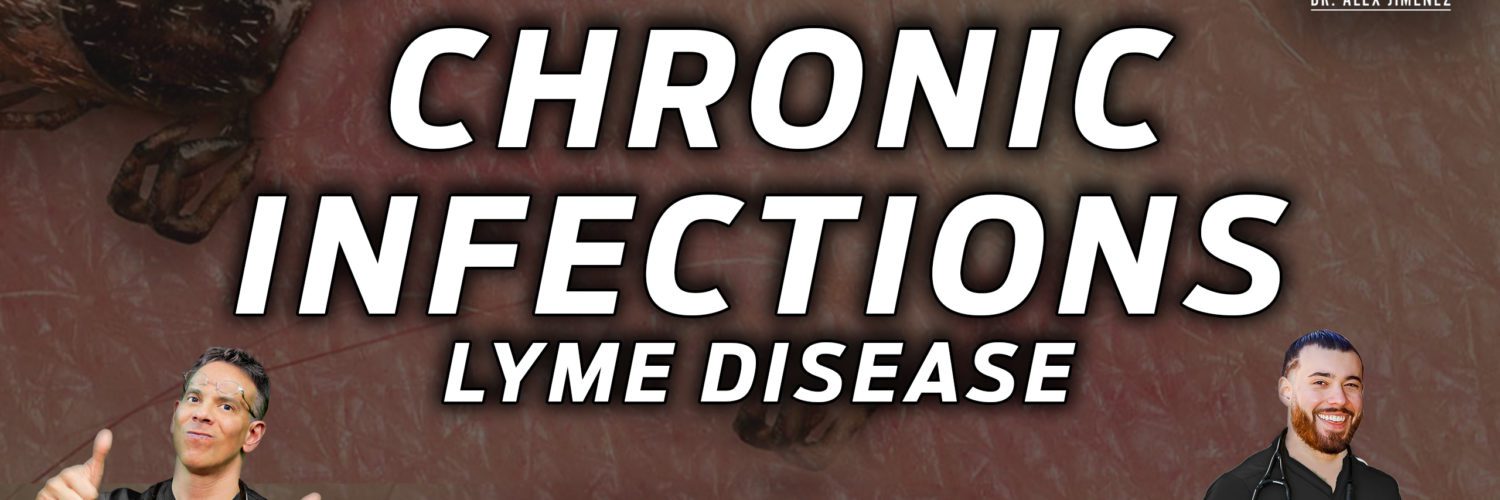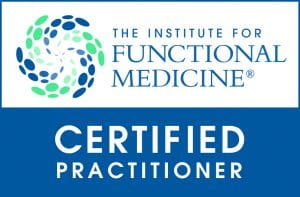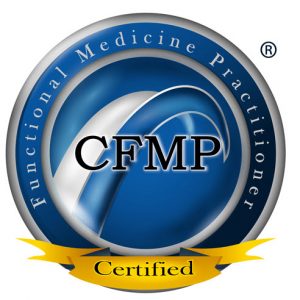Table of Contents
Introduction
Dr. Jimenez, D.C., presents how Lyme disease can cause referred pain to the body in this 3-part series. Many environmental factors can cause numerous issues in the body that can lead to overlapping risk profile symptoms in the muscles and joints. In today’s presentation, we examine the different treatment protocols for Lyme disease. Part 1 looks at the body’s genes and looks at the right questions to ask. Part 2 looks at how Lyme disease is associated with chronic infections and how it affects the body. We mention our patients to certified medical providers that provide available therapy treatments for individuals suffering from chronic conditions associated with Lyme disease. We encourage each patient when it is appropriate by referring them to associated medical providers based on their diagnosis or needs. We understand and accept that education is a marvelous way when asking our providers’ crucial questions at the patient’s request and acknowledgment. Dr. Alex Jimenez, D.C., uses this information as an educational service. Disclaimer
The Biofilm In The Body
Dr. Alex Jimenez, D.C., presents: The elimination of all biofilms makes no more sense than trying to sterilize the gut. So biofilms are this adherent polysaccharide matrix. We like to think of it as a fruit cocktail jello. So you’ve got the jello and all the different pieces of fruit in there, and each other type of fruit might even be a different species of bacteria. And one of those bacteria can make penicillinase, and it can elaborate a cloud of penicillinase into the matrix, protecting even species that can’t make it. And we already talked about how these biofilms can be operant in probiotic colonization, but they are also part of several problematic infections.
So there are several strategies to modify biofilms, making them more porous to the immune system and antibiotics. So Lactoferrin is one, Colostrum, which contains Lactoferrin in a bunch of other products as well. Serum-derived bovine immune globulin is egg divide-derived immune globulin for your sensitive patients. Probiotics and prebiotics can have biofilm activity. And then enzymes, as we mentioned before, are a carbohydrate structure, and enzymes can break down that matrix and make it more porous. So can Xylitol and EDTA be strong anti-film actors and stevia?
Lyme Serology Test
Dr. Alex Jimenez, D.C., presents: So Lyme serology testing needs to be more sensitive for diagnosis, especially during the early or late stages. And we’ll see why in a minute. So the standard two-tiered test requires a screening test of either an ELISA test or an IFA and then a confirmation test of a Western blot. The International Lyme and Associated Disease Society or ILADS and others argue that this two-tiered test should be only for surveillance or research purposes but not for diagnosis in individuals. So here’s what that scheme looks like, you either get an EIA or an IFA, and if it’s positive or equivocal, you go onto a Western blot. If you’ve had symptoms for less than 30 days, you get both an IGM and an IGG. If you’ve had symptoms for more than 30 days, you only get an IGG. Now, there are special criteria for reading the Western blot. They require multiple positive bands depending on whether it’s an IGM or an IGG blot. If your screening test is negative and you’ve been sick for less than 30 days, you should be retested in, you know, at some recovery point. You should consider a different diagnosis if you have been sick for more than 30 days. And we are going to talk about why this scheme is problematic.
So it’s highly specific. This two-tiered test is 99 to hundred percent specific, but its sensitivity is rather poor, perhaps even lower than 50%. So, here’s the data on that. We see the number of patients in the study, the patients versus controls, and the sensitivity and specificity. We also see totals, and the total sensitivity was 46%, while the total specificity was 99%. So as a test, think about it; we all learned about appendicitis in med school. You must take out a few normal appendices to ensure you get all the bad ones. If you’re missing half of the Lyme disease cases, many people will go onto tertiary disease.
Testing For Lyme Disease
Dr. Alex Jimenez, D.C., presents: So what about seronegative Lyme? So people who had the test and it was negative. Well, here’s a female patient who had what appeared to be Lyme arthritis despite recurrent negative Borrelia Burgdorferi tests. So she was found to have a different species of Borrelia garinii, and multiple courses of antibiotics didn’t do the tricks. So she had more courses of antibiotics and synovectomy, which eventually did help. This test says that Lyme borreliosis patients with live spirochetes in body fluids have a low or negative level of Borrelia antibodies in their serum. This indicates that an efficient diagnosis of Lyme borreliosis must be based on various techniques such as serology, PCR, and culture. And in this study, spirochetes were isolated from skin cultures obtained from multiple lesions. These spirochetes were identified as not Borrelia Bergdorferi but instead as Borrelia Afzelii.
However, Serum Borellia Burgdorferi tests were repeatedly negative. One of the problems with these tests is that the kit that comes approved is based on Borelli Burgdorferi, B-31 strain. And we see from these seronegative Lyme tests that some other strains and species may be involved. So the IDSA guidelines state that there is no convincing biological evidence for symptomatic chronic Borrelia Burgdorferi infection among patients after recommended treatment regimens for Lyme disease. This was noted in a culture-proven case of antibiotic failure with Borrelia Burgdorferi infections in 1989.
So, what about the animal model? There was an antibiotic failure in an animal model, this mouse model. In this dog model, there’s an antibiotic failure. In this Macaque monkey model, there’s an antibiotic failure. And in this particular study, Borrelia Burgdorferi can withstand antibiotic treatment when administered post-dissemination in primates. And as we’ll see in a little bit, many patients with Lyme disease are diagnosed post-dissemination. So these findings raises important questions to discuss with patients about the pathogenicity of antibiotic-tolerant persisters and whether or not they can contribute to symptoms post-treatment in Lyme disease. Human studies suggest that 25 to as many as 80% of patients have persistent symptoms after two to four weeks of antibiotic therapy. In this study, up to 40% of patients were found to have a persistent infection after the recommended IDSA treatment. So in this study, the patient’s condition deteriorated despite receipt of repeat courses of antibiotic therapy over two years.
The Protocols
Dr. Alex Jimenez, D.C., presents: They then received 12 months of intravenous antibiotics and 11 months of oral inter condition improved significantly. You’re going to see that we don’t have to resort to these long courses of antibiotics so much anymore because we have different tools. But this suggests that a longer duration may be helpful. Our study substantiates Borrelia persistence in some erythema migraine patients at the site of the infectious lesion site, despite antibiotic treatment over reasonable periods. And this was not because of rising MIC (minimal borreliacidal concentrations) levels. Therefore, resistance mechanisms other than the acquired resistance to antimicrobial agents should be considered in patients with Lyme Borrelia resistant to treatment. And in this study, a declining antibody response, which has been noted following antibiotic treatment in mice and in antibiotic-treated dogs, occurs despite low levels of persistent spirochetes. Our results show spirochetes are viable and transmissible and express antigens following antibiotic treatment.
This is a biostatistical review of the papers that the IDSA used to argue that there’s no compelling evidence of persistent symptoms after treatment and that repeated antibiotic treatment does not work. And they conclude that this biostatistical review reveals that re-treatment can be beneficial. Primary outcomes originally reported as statistically insignificant were likely underpowered. The positive treatment effects of Ceftriaxone are encouraging and consistent with persistent infection, a hypothesis deserving additional study. All right, so now we are going to start applying appropriate sequence diagnostic steps for Lyme disease.
What Symptoms To Look For?
Dr. Alex Jimenez, D.C., presents: The International Lyme and Associated Disease Society, or ILADS, has published evidence-based guidelines for managing and treating LymeLyme, and they’ve done something unique in the practice guidelines space. They publish an appendix, and then in this appendix, they compare the ILADS versus the IDSA guidelines for every single recommendation. So we see the management of an exodus species bite. So exodus tick bites typically have many useful symptoms, but the best treatment for chronic Lyme disease is early treatment of acute Lyme disease. But this is hard because the erythema migraines rash only shows up in about half of the patients with Lyme disease. And the central clearing makes it look like the bullseye rash, which is the stereotypical or classical erythema migraines rash. That central clearing only shows up in about half of the rashes. In fact, in one case series of 11 erythema migraine rashes, they were misdiagnosed as cellulitis, even though all 11 patients showed clinical evidence of Lyme disease progression.
To that point, making it even more difficult is that only about half of the patients with Lyme disease remember a tick bite. So it’s important to think about Lyme disease anytime you’re evaluating somebody suffering from flu-like symptoms off-season. So if they have the summer flu, they feel Lyme disease. So what are some symptoms? Severe unrelenting, life-altering fatigue. Now we’re talking about chronic Lyme disease here, not acute Lyme disease. Acute Lyme disease symptoms include low-grade to even significant fever, chills, body aches, and sweating. But we’re talking about chronic Lyme disease and its symptoms, which include severe unrelenting, life-altering fatigue, migrating arthralgias, and myalgias which can progress over time. What is this migrating business? It means that the left knee hurts so bad a person can hardly walk, but now three days have gone by, their left knee doesn’t hurt at all, but their left shoulder is killing them. This is known as referred pain, where one location in the body is dealing with pain instead of the main source that has been affected. This causes the sensory nerves to top go haywire in the body and, over time, develop overlapping symptoms that can affect the vital organs, muscles, joints, and tissues.
These symptoms correlate with joint inflammation going on here. Memory impairment, brain fog, mood swings, and anxiety all progress. What about the patient’s history? Living in or traveling to a tick-infested area is an important piece of history. A known tick bite, even though half the patients don’t know about it, that’d be useful. A rash, even though half the patients don’t have one, that’d be useful. And then the symptoms we described.
So what about the physical exam? Unfortunately, it’s generally non-specific, but you must carefully consider neurological, rheumatological, and cardiac symptoms when suspicious of Lyme disease. You know, you might find arthritic kinds of symptoms. You might discover meningitic signs. And anyone who has Bell’s Palsy should be ruled out for Lyme disease. Bell’s Palsy is Lyme disease until proven otherwise.
Another interesting thing is doing vibratory sense evaluation by confrontation. And what’s interesting is you do it, put your finger on the bottom of the metatarsal and put the tuning fork on the top of the metatarsal or metacarpal. And you wait until you can’t feel it transmitting the bone, right, and if the patient says that they don’t feel it, and you still do, that’s probably not normal.
Conclusion
Dr. Alex Jimenez, D.C., presents: When treating Lyme disease associated with chronic infections, if the immune system is not responding in a way that we would expect a healthy person’s immune system to respond, then providing additional tests to figure out the symptoms causing overlapping risk factors are useful. Remember that treating chronic infection is a master’s class in functional medicine. We must use all of our tools and do laps around the matrix. Every time you get a new piece of data, it is interesting. We need to think about the matrix in total. We need to consider the five modifiable factors of psychosocial, spiritual, mental, emotional, and spiritual aspects of what the patient is going through. And remember that your ATMs are not your destiny. And that infectious agents often modify the local and systemic immune response displaying self-stealth pathology, which can be in the body for years. Talking with your patient about what is happening in their genes and providing a personalized treatment plan to give them the tools for their health and wellness.
Disclaimer
General Disclaimer
Professional Scope of Practice *
The information herein on "Various Treatments For Lyme Disease (Part 3)" is not intended to replace a one-on-one relationship with a qualified health care professional or licensed physician and is not medical advice. We encourage you to make healthcare decisions based on your research and partnership with a qualified healthcare professional.
Blog Information & Scope Discussions
Our information scope is limited to Chiropractic, musculoskeletal, physical medicines, wellness, contributing etiological viscerosomatic disturbances within clinical presentations, associated somatovisceral reflex clinical dynamics, subluxation complexes, sensitive health issues, and/or functional medicine articles, topics, and discussions.
We provide and present clinical collaboration with specialists from various disciplines. Each specialist is governed by their professional scope of practice and their jurisdiction of licensure. We use functional health & wellness protocols to treat and support care for the injuries or disorders of the musculoskeletal system.
Our videos, posts, topics, subjects, and insights cover clinical matters, issues, and topics that relate to and directly or indirectly support our clinical scope of practice.*
Our office has reasonably attempted to provide supportive citations and has identified the relevant research study or studies supporting our posts. We provide copies of supporting research studies available to regulatory boards and the public upon request.
We understand that we cover matters that require an additional explanation of how it may assist in a particular care plan or treatment protocol; therefore, to further discuss the subject matter above, please feel free to ask Dr. Alex Jimenez, DC, or contact us at 915-850-0900.
We are here to help you and your family.
Blessings
Dr. Alex Jimenez DC, MSACP, RN*, CCST, IFMCP*, CIFM*, ATN*
email: coach@elpasofunctionalmedicine.com
Licensed as a Doctor of Chiropractic (DC) in Texas & New Mexico*
Texas DC License # TX5807, New Mexico DC License # NM-DC2182
Licensed as a Registered Nurse (RN*) in Florida
Florida License RN License # RN9617241 (Control No. 3558029)
Compact Status: Multi-State License: Authorized to Practice in 40 States*
Presently Matriculated: ICHS: MSN* FNP (Family Nurse Practitioner Program)
Dr. Alex Jimenez DC, MSACP, RN* CIFM*, IFMCP*, ATN*, CCST
My Digital Business Card



















